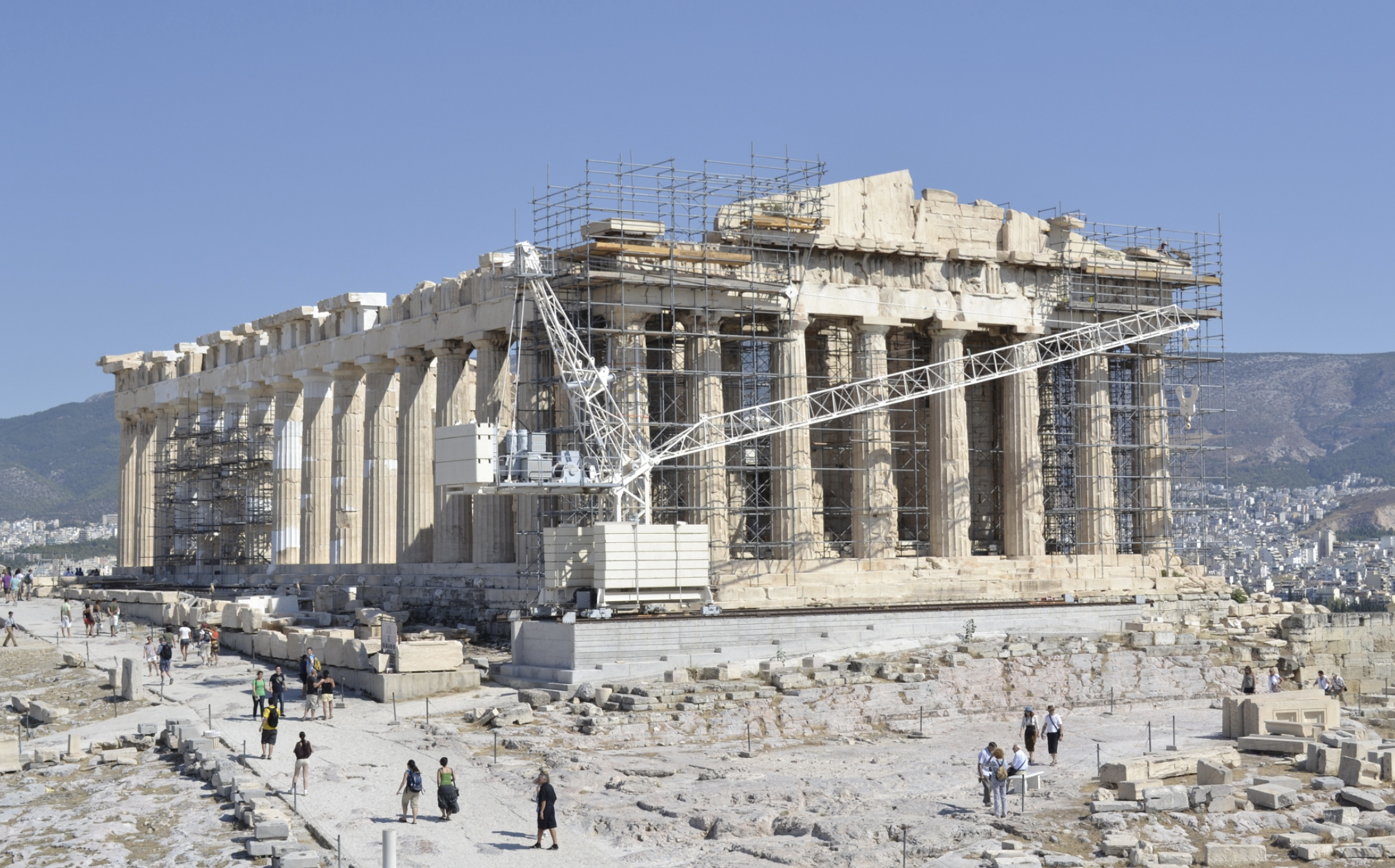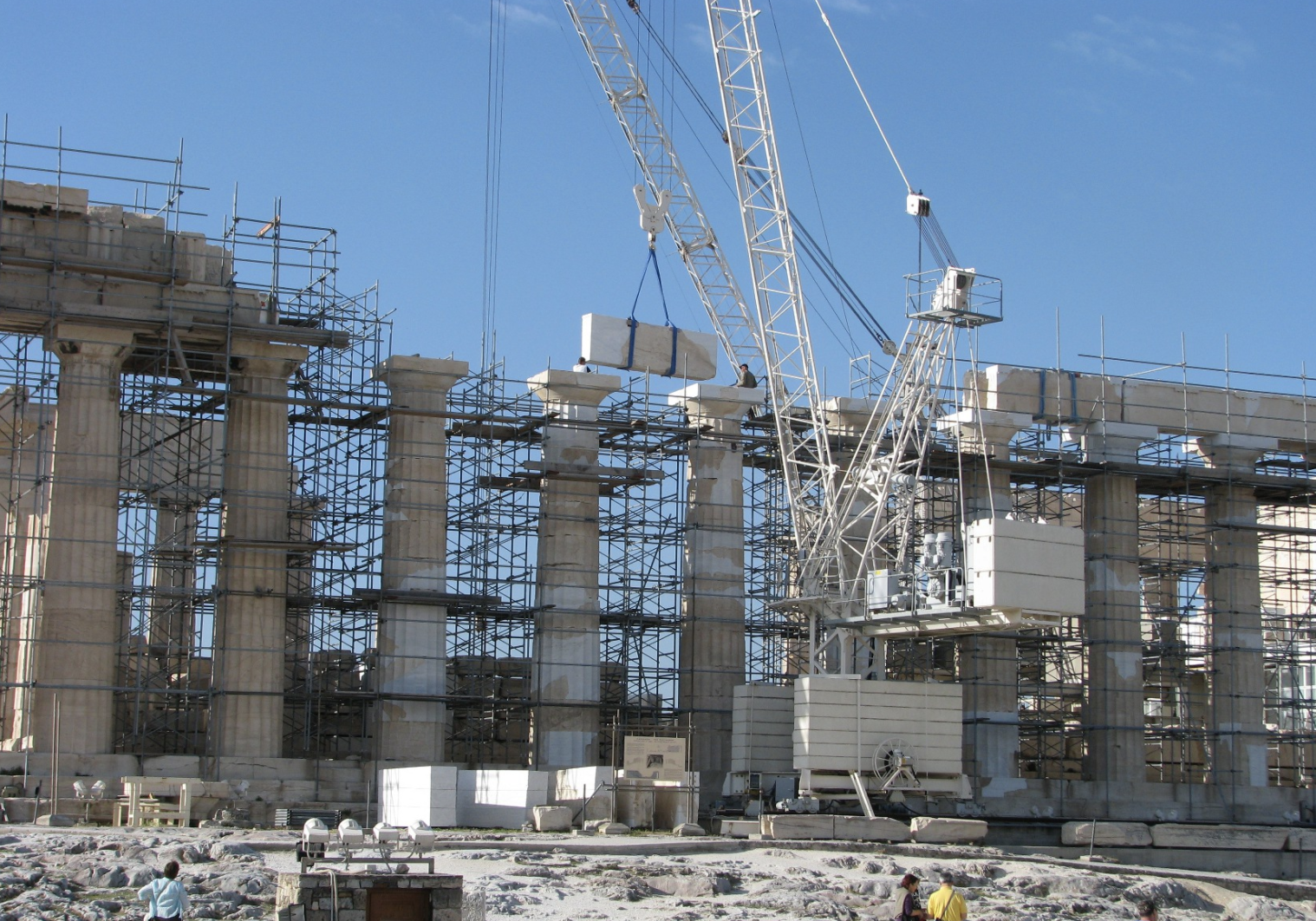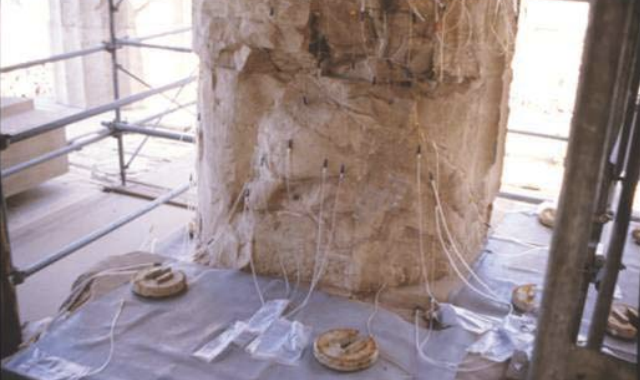
History
The Parthenon is the most iconic monument of the Athenian Acropolis, it is recognized worldwide and symbolizes a great sense of Greek pride and nationalism. Construction of this massive, ancient temple began around 448 B.C. after the Persians had sacked Athens in the year 479 B.C. over control of Greece. General and statesman Pericles insisted on rebuilding temples during this Golden Age of Athens to commemorate victories and indulge in the city’s glory. It is a Doric, peripetral temple dedicated to Athena, protectress of the city, with hexastyle porches and many Ionic features. Under the architectural direction of Iktinos and Kallikrates and supervision of sculptor Pheidias, artistic and unique details were added to the Parthenon, such as an Ionic frieze, ivory and gold statues, and metopes depicting mythical struggles. Its internal structure is divided into 3 parts: the pronaos (front porch), the cella (sanctuary), and the opisthonaos (rear porch). Over the proceeding centuries, the Parthenon suffered collateral damage caused by natural disasters and warfare during the Ottoman Empire. The temple was also altered to fit the religious needs of various cultures by operating as churches and mosques as well as serving purposes for art collections and architectural renovations. Nonetheless, in the late 17th century much of the Parthenon’s original features had been demolished and much of the site lay in ruins, until recent efforts to save the ancient monument.
Reconstruction
In progress
- Current works on the Parthenon include the west side of the monument, preservation of the metopes, column fluting, surface conservation, and the cella. Structural repairs are most common in the Parthenon and require the dismantling of damaged pieces, the installation of new Pentelic marble, and securing fragments with titanium fixtures. A total of 111 architectural blocks have been disassembled thus far on the two corners of the west side along with seven metopes. They have been transported to the Acropolis museum for protection and in their place, artificial copies in new stone will be placed on the Parthenon. Surface conservation is being instructed on the blocks that have been taken down in order to be placed in their correct positions. This consists of cleaning and restoring techniques to preserve the material’s antiquity as well as optical fiber sensors to detect future shifts in the stones that may cause additional damage. To complete the interventions on the drums for the columns, flute caving is underway by highly trained and professional craftsmen. These are located at the north and southeast colonnades. Finally, the door of the west wall of the cella is another crucial focus in the Parthenon restoration. Two internal beams must be restored and complemented with new marble after previous repairs attempts have been deemed harmful.
Completed
-
The Parthenon’s restoration project is divided into 12 programs focusing on various, specific sections of the monument such as the east side, the north and south colonnade, the pronaos, and the opisthonaos. These areas in particular have been completed within the last 20 years by the interventions of the Acropolis Restoration Service. Here, breaks in the architectural members were discovered which led to the extension of the works to include the metopes, pediments, friezes, capitals, and columns. Most splits were caused largely in part by earthquakes and explosions from previous centuries and neglect of these fragile conditions. The individual columns of the pronaos endured several restorations as well as the opisthonaos, where the members of each section were structurally dismantled and reassembled accordingly based on studies done by acclaimed civil engineers and the implementation of a rotating system that allowed the stone pillars to be moveable. Over 300 tons of marble have been removed, conserved, and rearranged in their positions. A total of 750 stones have been recovered from the area around the standing Acropolis and are now visible on the great monument.




